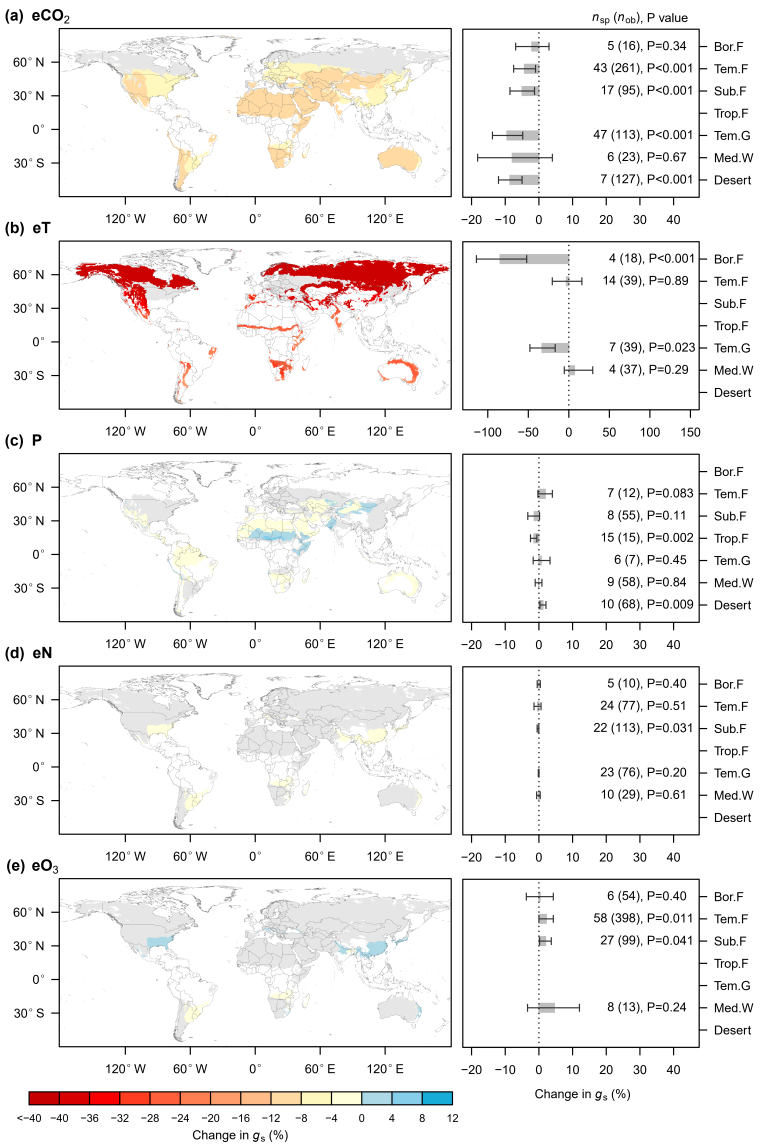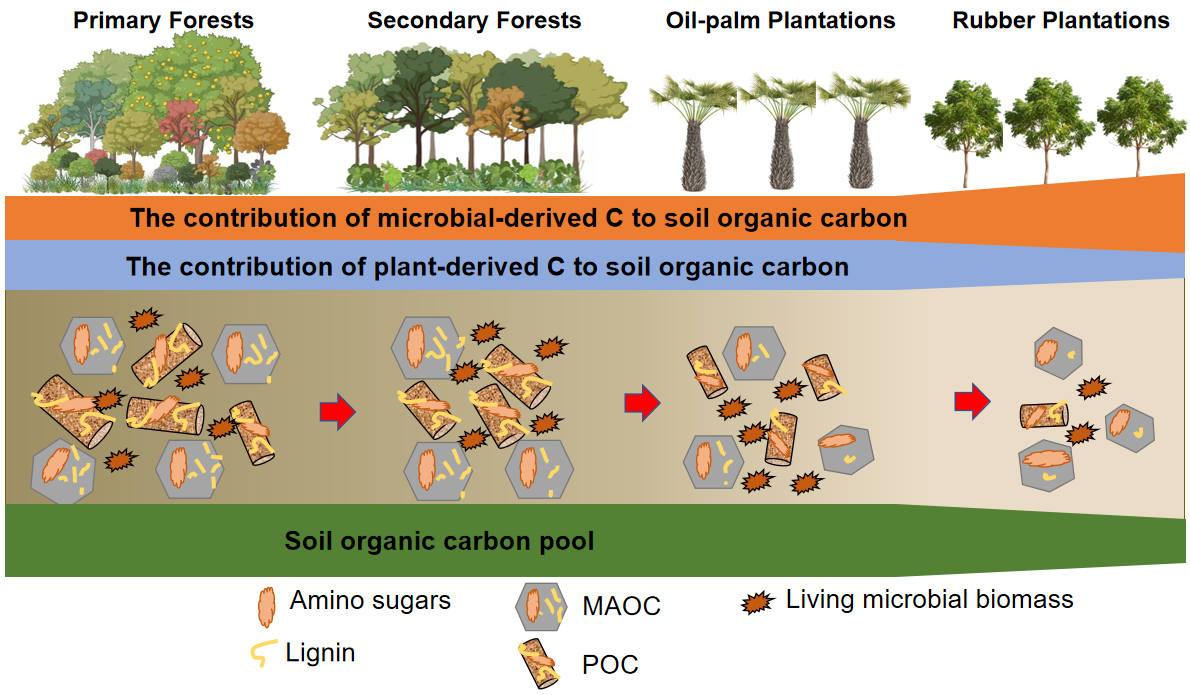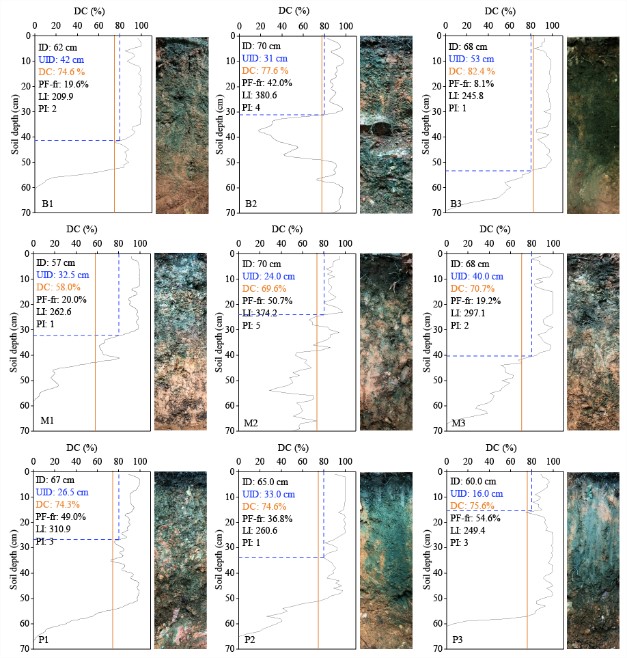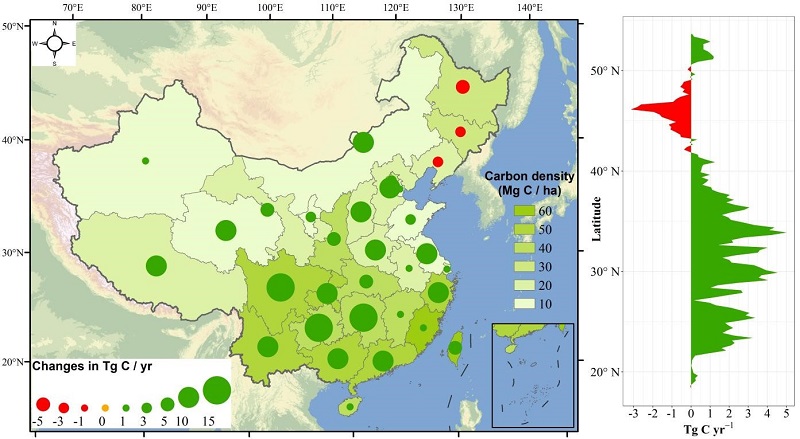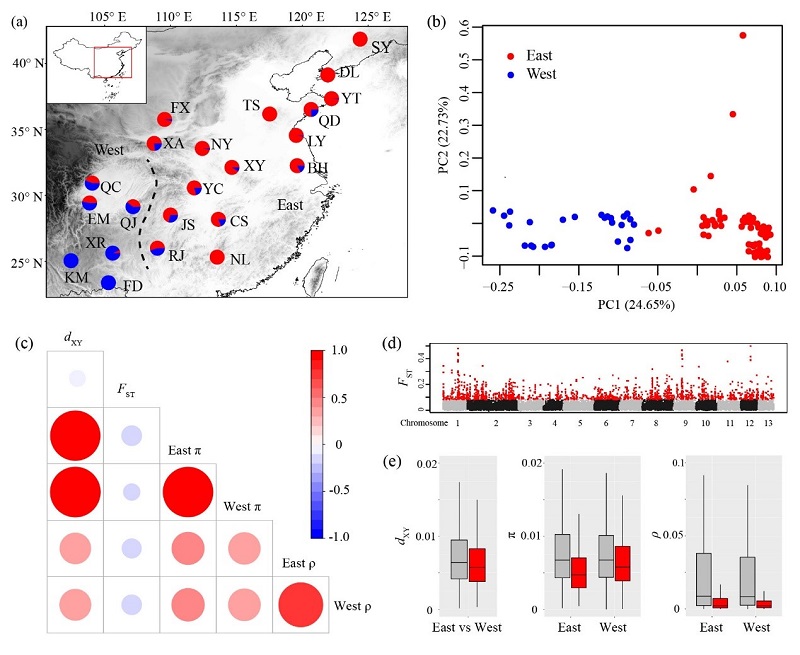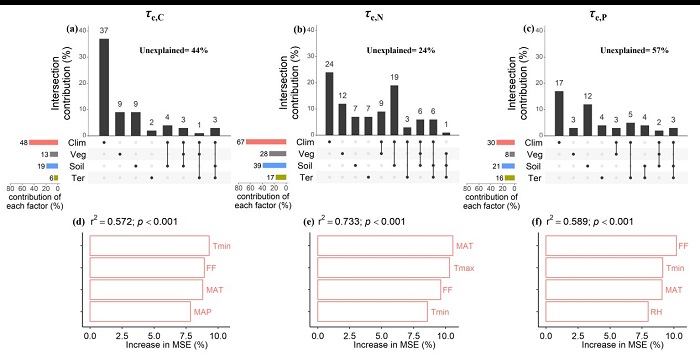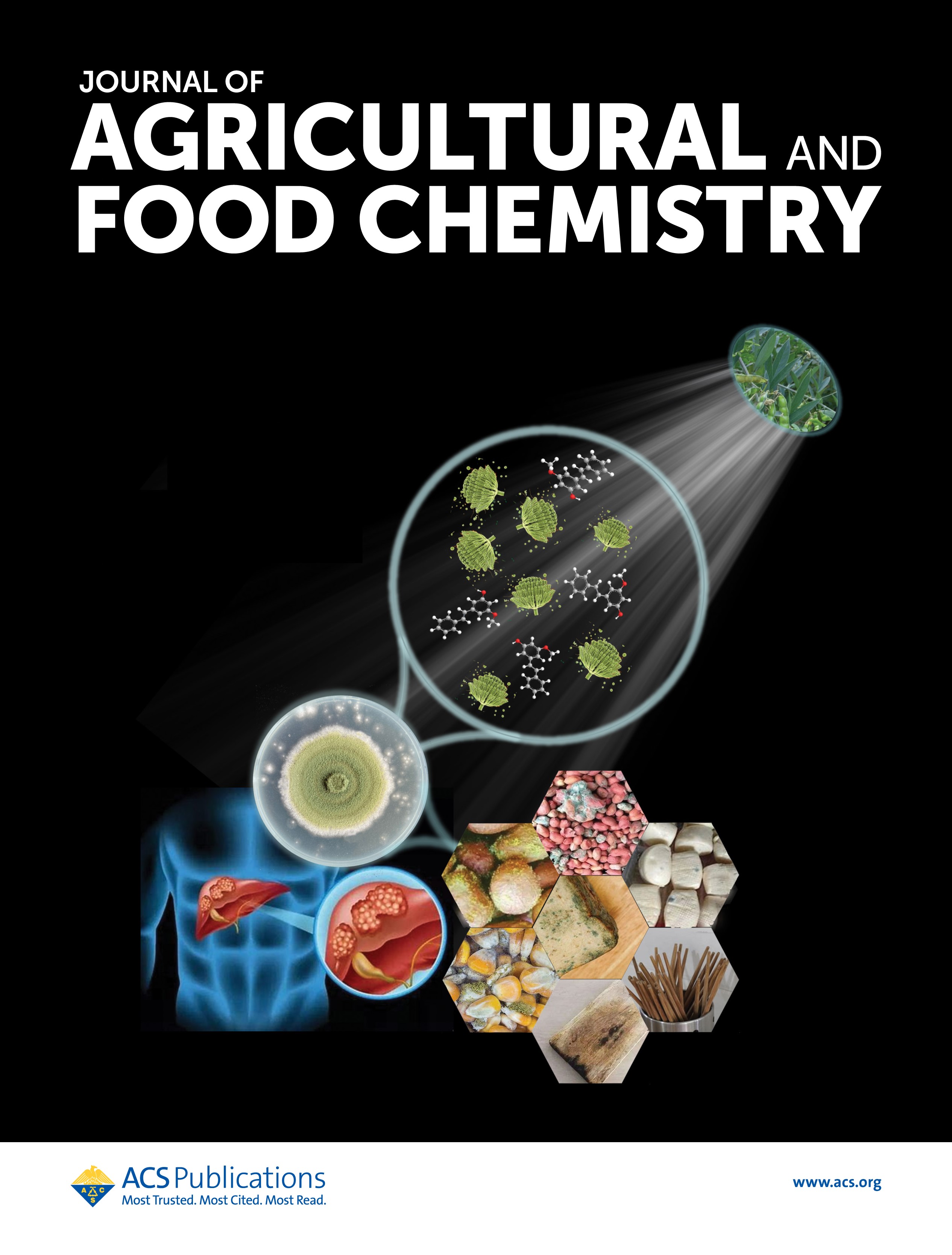News
-
2023-04-24SCBG researchers reveal the stomatal responses of terrestrial plants to global changeImpact of various global change factors on stomatal conductance in land plants .Global change factors were generally additive , but as effect sizes increased , they tended to be antagonistic ( meaning the combined effects of two factors.For more information , please visit https : / / doi . org / 10.1038 / s41467-023 - 37934-7 . Stomatal conductance is an important eco-physiological trait of plants and a fundamental parameter of earth system models. Previous studies have shown that stomatal conductance is sensitive to environmental change, but little is known about how it is affected by multiple global change factors.Read More
A research team led by Professor YE Qing at the ... -
2023-04-20Divergent accumulation of amino sugars and lignins mediated by soil functional carbon pools under tropical forest conversionPlant - ( e . g . lignin ) and microbial-derived ( e . g . microbial necromass ) metabolic products are important sources of soil organic carbon ( SOC ) pool .Co-corresponding authors were Pro . Zhanfeng Liu in South China Botanical Garden and Prof . Naishen Liang in National Institute for Environmental Studies ( Japan ) . https : / / doi . org ... Plant- (e.g. lignin) and microbial-derived (e.g. microbial necromass) metabolic products are important sources of soil organic carbon (SOC) pool. Owing to the relative higher persistence of microbial-derived C, the composition of sources play a vital role in the stabilization of SOC pool. Meanwhile, labile particulate organic carbon (POC) and re...Read More
-
2023-02-23Response mechanism of forest soil water flow at Dinghushan areaWater flow directly affects solute flow , groundwater exchange and plant water uptake .Capacity are better in the first two forest types than in Pine forest , however , soil water flow patterns and preferential flow levels do not show the same.Of water flow and the degree of preferential flow .Preferential flow ( PF-fr , LI , PI ) showed varying...Read More
Soil water flow behavior generally includes two forms, preferential flow and matrix flow. The active degree of water flow directly affects solute flow, groundwater exchange and plant water uptake. In this study, we analyzed the soil water flow patterns and driving mechanisms in three different forest types (BF, MF and PF) in the subtropical... -
2023-02-09Estimating Aboveground Carbon Dynamic of China Using Optical and Microwave Remote Sensing Datasets from 2013 to 2019Optical depth ( VOD ) ) and three optical ( normalized difference vegetation index , leaf area index , and tree cover ) remote sensing vegetation products , this study., followed by L-VOD ( R ? = ? 0.83 ) , which outperform the other VODs . An AGC estimation model was proposed to.Guizhou ( + 22.35 Tg C yr-1 ) , Sichuan ( + 14.49 Tg C yr-1 ) , ... Over the past two to three decades, Chinese forests are estimated to act as a significant carbon sink, yet the magnitude and spatial patterns of this sink differ considerably among studies. Using three microwave (L- and X-band vegetation optical depth (VOD)) and three optical (normalized difference vegetation index, leaf area index, and tree cov...Read More
-
2023-02-09Genomic vulnerability to climate change in Quercus acutissima, a dominant tree species in East Asian deciduous forestsTo future climate change is critical for biodiversity conservation , optimal afforestation , and sustainable development of forest resources .Species in East Asian deciduous forests ” was published in Molecular ecology .Geographic distribution , population structure , and genomic variation patterns of Quercus acutissima .Local , forward , and r... Rapid global climate change is one of the serious threats to biodiversity. Forest tree species play important roles in maintaining the stability of ecosystem and improving ecosystem services. Understanding how the evolutionary process shape the landscape of genetic variation and contribute to the response of forest species to future climate chan...Read More
-
2022-12-20Temperature dependence of ecosystem carbon, nitrogen and phosphorus residence times differs between subtropical and temperate forests in ChinaInputs and outputs of carbon ( C ) , nitrogen ( N ) and phosphorus ( P ) are the needs to maintain functioning and.Development of ecosystem , and are also functions of ecosystem .Therefore , residence times of C and nutrients are important evidences to evaluate.Influence of climate , vegetation , soil and topography on ecosystem residence times ... Inputs and outputs of carbon (C), nitrogen (N) and phosphorus (P) are the needs to maintain functioning and development of ecosystem, and are also functions of ecosystem. Therefore, residence times of C and nutrients are important evidences to evaluate stability of ecosystem structure and function. The residence times are influenced by internal ...Read More
-
2022-12-20A series of research progresses achieved by Xiaoliang Station on how nitrogen deposition affects soil carbon pools in tropical forests and its mechanismsCarbon pool and its components .Conceptual diagram showing the effect of accumulation of GRSP and MRC on SOC content and potential microbial mechanisms under nitrogen deposition conditions .Read More
Soil is the largest carbon (C) reservoir of terrestrial ecosystems, and at least half of soil organic carbon is stored in forests. Tropical and subtropical forests play a vital role in the global forest carbon cycle, accounting for 78% of total global forest carbon emissions and 55% of total carbon uptake. Human activities also lead to incr... -
2022-12-13South China Botanical Garden of Chinese Academy of Sciences made an important breakthrough in the discovery and antifungal mechanism of plant-derived natural productsLow immunity .Foods ( GB 2761-2017 ) also sets limits for Aflatoxins in food .In view of the advantages of chemical control , research and development of novel , efficient and green antifungal drugs is.Together , natural stilbenes are promising antifungal candidates for food , pharmaceutical.Liyuan Yao was responsible for the extraction , separa... (植源抗真菌活性先导化合物发现和作用机制)Read More
Aspergillus flavus is a common fungus that can infect agricultural products, medicinal herbs and processed foods. It can produce aflatoxins during infection. Uncontrolled exposure to aflatoxin may cause 28.2% of all liver cancer cases globally. A.flavus has caused significant losses to agricultural...
